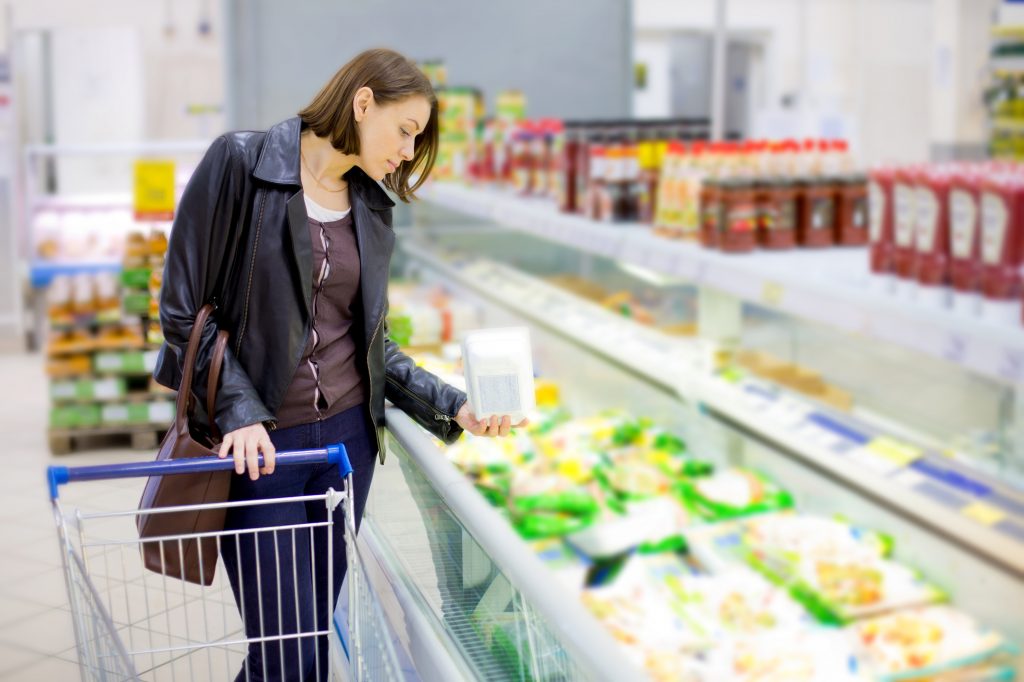
Local trumps organic
January 12, 2018
By Ruby Gonzalez
A study translated into dollars and cents the economic gains from various seafood labels, including “certified organic” and locally grown.
 A study says consumers are willing to pay more for seafood labelled “organic” but even more for seafood grown in their home state
A study says consumers are willing to pay more for seafood labelled “organic” but even more for seafood grown in their home state Results showed consumers in the study were willing to pay a premium of as much as 30 percent for specific certified organic seafood products. It also showed that the price premium they are willing to pay could be as much as 35 percent for seafood labelled as coming from the consumers’ home state, compared to those labelled as “imported” or “from the US.”
“We would like for this study to be able to aid in exploring the potential benefits for aquaculture of gaining organic certification or labelling the state of origin of products and selling those products within that state,” Christian Brayden, project manager at the Maine Aquaculture Association, told Aquaculture North America (ANA). He has recently completed his master’s degree in Resource Economics and Policy at the University of Maine.
A portion of Brayden’s thesis examined the consumer preferences for organically produced aquaculture products, specifically oysters, clams, mussels, scallops and seaweed salad, which still do not all have certified organic standards.
While working on the thesis, he was a research assistant at the University of Maine. The research was funded by the Sustainable Ecological Aquaculture Network (SEANET) grant. His thesis advisers were Dr Caroline Noblet and committee members, Dr Keith Evans and Dr Laura Rickard.
Assessing potential gains
“On an individual level, we hope that farmers could use the results to assess the potential gains of becoming certified organic, when possible, or labeling the state of production while weighing the associated costs.
“On a larger scale, we hope that this study provides social science data that meets the needs of those interested in aquaculture,” said Brayden.
Seafood consumers from coastal US states and the Great Lakes were invited to participate in the online choice experiment and survey.
“We wanted to explore consumer preferences for aquaculture products labelled as certified organic or as produced in a consumer’s home state.
“We had a particular interest in certified organic because we read that USDA standards for organic aquaculture would be released soon, and we wanted to see if consumers had a preference for certified organic aquaculture goods like they do for certified organic terrestrial agriculture goods,” he said.
Since not all aquaculture products from the US list the state where they were produced, the study included a “home state” attribute.
The consumers in the study typically purchased seafood from grocery stores, local fish markets, harvesters and “others.” While labels could be considered important in all these locations, Brayden said grocery stores and local fish markets are likely to have detailed labels similar to those used in his study.
“Labels are considered especially important in these two locations because they are often the sole source of information for the products we are interested in purchasing. Grocery stores, the location where seafood is most frequently purchased, are most likely to highlight the importance of labels as fish markets tend to have employees with extensive knowledge and experience with seafood,” he said.
Price premiums
Consumers in the study were willing to pay price premiums ranging from 9 percent to 29 percent for certified organic shellfish and seaweed salad. “For example, based on the prices used in the study, seafood farmers could receive an additional $2.13 per lb for scallops and an additional $0.52 per oyster if they were certified organic,” he said.
Certified organic clams garnered a $0.69 price premium per lb (13 percent more over non-organic), certified organic mussels received a $0.63 price premium per lb (18 percent more), and certified organic seaweed salad produced a $0.83 price premium per salad (24 percent more).
Overall results indicated that 84 percent of the consumers in the study were willing to pay a price premium for a product that is certified organic.
The consumers said they were willing to pay between 12 percent and 35 percent more for aquaculture products that were from their home state when compared to those labelled as “imported” or from the “US.”
Over 90 percent of the consumers in the study were willing to pay a price premium for products from their home state. Oysters from a participant’s home state garnered a $0.61 price premium per oyster (35 percent more over non-organic), clams $0.88 (16 percent more), mussels $1.22 (35 percent more), scallops $3.03 (13 percent more), and seaweed salad $1.18 (34 percent more).
There was a “negative willingness to pay” for imported aquaculture products. Seafood produced in Canada was perceived differently though. “Several participants commented that they would consider Canada to be an exception, although this preference has not been tested for statistical significance,” he said.
Labels communicate product characteristics from the producer to the consumer. “How consumers respond to labels can also help to inform producers about what consumers like to see, or do not like to see, on product labels. In many instances, before we purchase a product our only source of information about the product is through the product’s label.”
Advertisement
- Moderate growth seen for world’s farmed salmon supply
- Industry weighs in on potential changes to NAFTA





